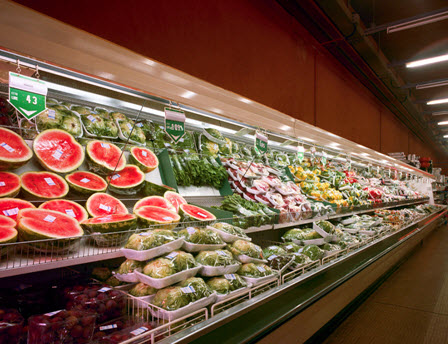Kraft Foods tests capabilities of mobile marketing tools
Consumer goods giant Kraft Foods has been quietly trialing NFC technology and QR codes over the last few months. The company has taken note of the growing popularity surrounding NFC technology and has been using tags embedded with NFC chips to market certain products. These NFC tags have been used alongside QR codes which have been implemented for the same purpose. The two marketing tools were pitted against one another to determine which was more effective with consumers.
NFC wins in popularity, but not in accessibility
Kraft Foods has finished its trail and found that NFC tags are indeed more popular than QR codes. According to Kraft Foods, NFC tags are more attuned to mobile shoppers than QR codes because they are easier to use. The trial took place at five, high traffic grocery stores in San Francisco, California. A multitude of Kraft products, as well as those from its subsidiaries, featured both NFC tags and QR codes that provided shoppers with information regarding the products and, in some cases, discounts. Kraft Foods notes that engagement with the NFC tags was nearly twelve times greater than engagement with QR codes.
NFC tags only available to those with capable mobile devices
NFC tags may have been able to beat out QR codes in terms of popularity, but they were not able to compete in terms of affordability and accessibility. NFC tags are somewhat more expensive than QR codes, considering the fact that QR codes can be generated for free. The codes can also be scanned by any mobile device that has a camera and a code scanning application. NFC tags can only be accessed by NFC-enabled mobile devices, which are still very rare. Furthermore, using NFC tags would alienate the entirety of consumers with Apple mobile devices, as none of these devices supports NFC technology.
QR codes remain leader of mobile marketing tools
While NFC may be a more engaging marketing tool than QR codes, the audience for NFC tags is still very limited. For this reason, QR codes are expected to remain the most favored mobile marketing tool in the business, at least until more consumers get their hands on NFC-enabled mobile devices. Few companies have been won over by the advertising prospects of NFC technology, nonetheless, so QR codes may remain dominant even after NFC-enabled devices become popular.
Heat launches new augmented reality initiative to enthrall tech-savvy readers
British entertainment magazine Heat has launched an augmented reality competition that tasks readers to scan British currency for a chance to win even more British currency. The competition was developed alongside Engine Creative, a digital advertising and marketing agency, and will coincide with Heat’s 2012 RIchlist segment, which documents the highest grossing celebrities under 30 in the United Kingdom. Readers are being encourage to scan banknotes for a chance to win as much as $700 in cash from the magazine.
Competition gives readers a chance to win money by scanning money
Readers can scan banknotes using the Heat Extra mobile application. When a banknote is scanned, a digital animation will be triggered on their smart phone or similar mobile device. These animations feature some of Britain’s most famous celebrities, such as Harry Styles and acclaimed singer Adele. After the animations have finished playing, consumers will be provided with details on how to enter for a chance to win cash from the magazine. The augmented reality competition will begin when the nest issue of Heat magazine is published on October 23, 2012.
Heat and Engine Creative continue producing digital campaigns
Heat and Engine Creative have been working together for some time now. The duo have created numerous digital campaigns in an attempt to reach out to readers becoming more enthralled with mobile technology. Indeed, Heat has been eager to appeal more to mobile consumers due to the fact that these people are forgoing traditional forms of media, such as magazines. Print may be becoming more unpopular, spurring publications to find ways to engage a generation that is no longer interested in static content. Augmented reality could be the key to capturing the attention of these consumers, as it presents publications with a way to provide dynamic content.
Augmented reality successfully engaging tech-savvy audience
Heat has made use of augmented reality in the past, with the help of Engine Creative. The magazine’s use of the technology has been largely well received by readers, especially those who favor their mobile devices over traditional mediums of entertainment. These consumers have been convinced to purchase physical copies of Heat magazine so as to access the digital content that is embedded within its pages.



